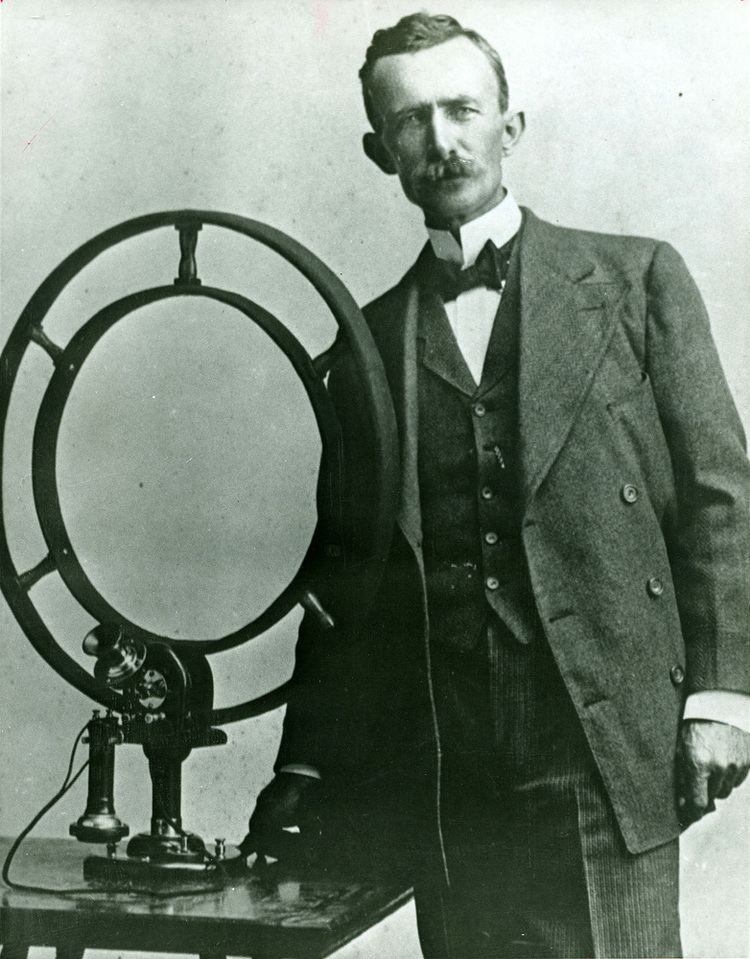
(click to enlarge)
The 1908 photograph depicts Nathan B. Stubblefield along with the wireless telephone of his own invention.
Born November 22, 1860 (1860-11-22) Cause of death heart disease (suspected) Died March 28, 1928, Murray, Kentucky.
Nathan Beverly Stubblefield (November 22, 1860 – March 28, 1928), self-described "practical farmer, fruit grower and electrician", was an American inventor best known for his wireless telephone work. He received widespread attention in early 1902 when he gave a series of public demonstrations of a battery-operated wireless telephone, which could be transported to different locations and used on mobile platforms such as boats. While this initial design employed conduction, in 1908 he received a U.S. patent for a wireless telephone system that used magnetic induction. However, he was ultimately unsuccessful in commercializing his inventions. He later went into seclusion, and died alone in 1928. https://alchetron.com/Nathan-Stubblefield
Wednesday, March 28, 1928, noted American inventor Nathan B. Stubblefield (1860-1928), a self-described “practical farmer, fruit grower, & electrician,” met his unfortunate earthly demise at the age of 67 when he died in seclusion from the effects of starvation & heart disease in a crude shelter near the village of Almo in Calloway County of the Commonwealth of Kentucky.
Nathan Stubblefield
Nathan Stubblefield is best-remembered nowadays for his wireless telephone work. He received widespread acclaim in early 1902 when he gave a series of public demonstrations of a battery-powered wireless telephone. In 1908, he received a U.S. patent for a wireless telephone system that used magnetic induction; however, he was ultimately unsuccessful in commercializing his inventions.
Disagreement persists as to whether or not Stubblefield’s communications technology can be classified as radio, & whether or not his 1902 demonstrations could be considered the first “radio broadcasts.” Most reviews of his efforts have concluded that they were not radio transmissions, because his devices, although a form of “wireless” communication, employed conduction & inductive fields, whilst the standard definition of radio is the transmission of electromagnetic radiation. Stubblefield may have been the first to simultaneously transmit audio wirelessly to multiple receivers, albeit over relatively short distances, whilst predicting the eventual development of radio broadcasting on a national scale.
Nathan Stubblefield (1860-1928) was an American inventor and farmer from Murray, Kentucky, who made significant contributions to the development of wireless communication. His most notable invention, a form of wireless telephone, was demonstrated in 1902, which placed him among the early pioneers in the field. Unlike the radio-based wireless communication later popularized by others, Stubblefield’s device transmitted voice through the earth and water using magnetic induction and conductive methods. This early demonstration of practical wireless voice transmission showcased the potential of non-wired communication, attracting the attention of other inventors and industry leaders of the time. Despite the innovative nature of his work, Stubblefield did not achieve significant commercial success and remained relatively obscure compared to his contemporaries in the communication technology arena. His life story is marked by a decline into reclusiveness and poverty, overshadowed by the more commercially successful inventors of his time. However, historical reassessments of his contributions have recognized him as a true pioneer whose work laid early groundwork for future wireless technologies. His demonstrations were well-attended by notable figures of the era, including Nikola Tesla and Edwin J. Houston, co-founder of General Electric, reflecting the significance and potential seen in his inventions at the time.
Nathan Stubblefield's journey as an inventor illustrates a blend of brilliance and the bittersweet trajectory of early pioneers whose groundbreaking ideas precede widespread technological adoption. His work, largely underappreciated during his lifetime, today invites a respectful acknowledgment in the annals of technological history, especially in the realm of wireless communications. [anon]
See Also
